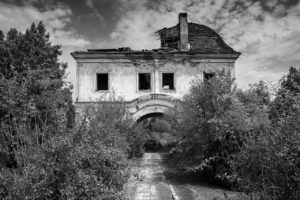Radnót

Radnót (Iernut, Radnuten) is a town in Transylvania, in Romania. It is famous for its fortified palace, the Rákóczi-Kornis-Bethlen palace that was built in the 16th century. The settlement is 28 km to the southwest of Marosvásárhely (Tirgu Mures), located on the left bank of the Maros River.

It was mentioned first in 1257 as Ranoltu. Its old church was burned by the Mongolians in 1241 and the new one was fully rebuilt only by 1486. Lady Bánffy Magdolna had the place reinforced with a moat and walls, and bastions in 1553. The castle was the property of Bogáthy Gáspár in 1545 but he was executed in 1575 by Prince Báthory István who took away the castle from him.

Later, Báthory Zsigmond gave the place to Kendi Ferenc but Kendi was executed two years later in 1589. It was Báthory Zsigmond who had him beheaded. The new owner became Kornis Boldizsár but he was also executed in 1610 by Prince Báthory Gábor.

Nevertheless, the palace remained in the hands of the Kornis family. Soon, we can see that Prince Bethlen Gábor owned the place. Then, Prince Rákóczi Zsigmond gained it in 1649 and he had it renovated in 1650. The prince used to dwell there, too. For the reconstruction, Rákóczi employed an Italian architect called Agostino Sereno who had come from Venice. The buildings that we can see now, were created at that time. It is assumed, that Sereno used the old foundations and walls for completing his work. The place was later given to Lady Bornemissza Anna.

Altogether 15 Diets had been held in the city. Before Transylvania lost its independence, the last Diet took place in Radnót, in 1690.
Prince Apafi Mihály II owned the palace for a while but he was arrested in Radnót, and it was the place from where they carried him to eternal captivity. Prince Ferenc Rákóczi Ferenc II took Radnót by force in 1703, at the beginning of the War of Independence of Hungary. Later, we can find it in the possession of Chancellor Bethlen Miklós in 1764.

The buildings burned down in 1802 but soon they got a new roof. It turned out, that Count Bethlen Márk played cards with Count Haller Jenő in 1885, and Bethlen lost Radnót in the game. I think Count Haller knew the sinister history of Radnót’s owners quite well, and it may have been the reason why he decided to give it to the Roman Catholic Church.

Now, the Renaissance fortified palace is in very bad condition, it is on the edge of collapse. There used to be an agricultural school in it but it closed its gates about 2009. Can we say that it was not a really lucky place?


Dear Readers, I can only make this content available through small donations or by selling my books or T-shirts.
If you like my writings, please feel free to support me with a coffee here:
You can check out my books on Amazon or Draft2Digital, they are available in hardcover, paperback, or ebook:
https://www.amazon.com/dp/198020490X or at https://books2read.com/b/boYd81

My work can also be followed and supported on Patreon: Become a Patron!http://Become a Patron!





















